Sound: 









Value: 









(Read about our ratings)
Measurements can be found by clicking this link.
 Why did I get so excited when I heard 64 Audio was introducing the Duo earphones? Because they’re one of only a very small number of open-back earphones. I have a long history of disagreeing with many of the principles commonly espoused by audio enthusiasts, but when it comes to open-back headphones, enthusiasts are absolutely right: open-back models simply sound better. They have a more spacious sound, and because the driver’s back wave isn’t captured by a resonant enclosure, they have a negligible amount of bass resonance—and thus flatter, more natural-sounding bass. I guess I shouldn’t generalize, but I can’t think of many exceptions to this rule.
Why did I get so excited when I heard 64 Audio was introducing the Duo earphones? Because they’re one of only a very small number of open-back earphones. I have a long history of disagreeing with many of the principles commonly espoused by audio enthusiasts, but when it comes to open-back headphones, enthusiasts are absolutely right: open-back models simply sound better. They have a more spacious sound, and because the driver’s back wave isn’t captured by a resonant enclosure, they have a negligible amount of bass resonance—and thus flatter, more natural-sounding bass. I guess I shouldn’t generalize, but I can’t think of many exceptions to this rule.
The Duo earphones ($1199, all prices USD) incorporate two drivers per earpiece: a dynamic driver and a balanced armature. The balanced armature uses 64 Audio’s Tia technology, which allows the armature’s diaphragm to vent out into a cavity inside the earphone instead of through a tiny metal tube as in most balanced armatures. Combined with the open-back design, that should give the Duos a more spacious sound than most earphones can muster.
I have to point out, though, that neither the text on 64 Audio’s website nor my close examination with the magnifying glass app on my phone told me whether both drivers or just one are in open-back loading, or exactly how open that back is, or how much external sound leaks in and at what frequencies. But my isolation measurements solve this mystery—check them out through the link at the top of this review.
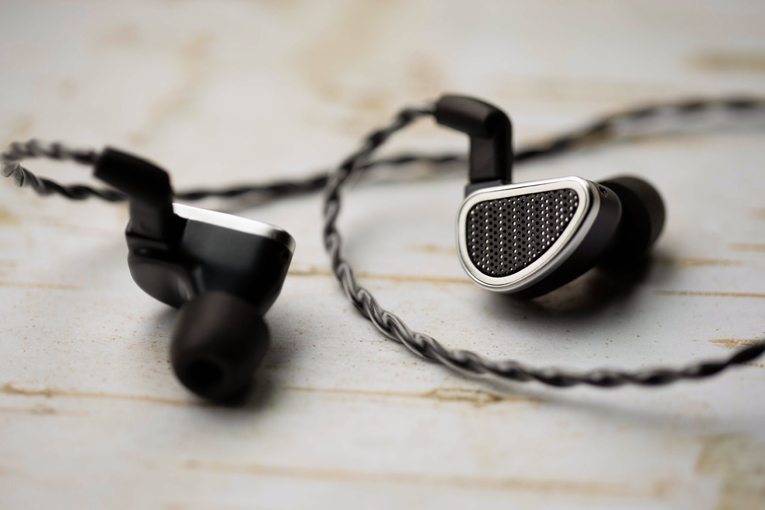
This design is far simpler than most of 64 Audio’s products, such as the U6t earphones, which have six drivers per earpiece. But the two designs look outwardly somewhat similar; both share the same shape and the same over-the-ear cable routing. If you want to dig deeper into company founder Vitaliy Belonozhko’s design and voicing philosophies, check out my interview with him.
The Duos’ rated impedance is rather low at 9 ohms, and rated sensitivity is just 98dB—pretty low for earphones. So if you plug the Duos straight into a smartphone or other portable device, you might end up wanting more volume. But you can find out more about this through the measurements link at the top of this article.
In the box
The Duos come with a cylindrical, leather-covered carrying case that’s about the same diameter as a hockey puck and about twice as thick. Nine sets of eartips are included: three sizes each of foam tips, generic silicone tips, and SpinFit silicone tips. Instead of flopping around loose in the case, the tips fit onto a plastic holder with a 64 Audio logo on it.
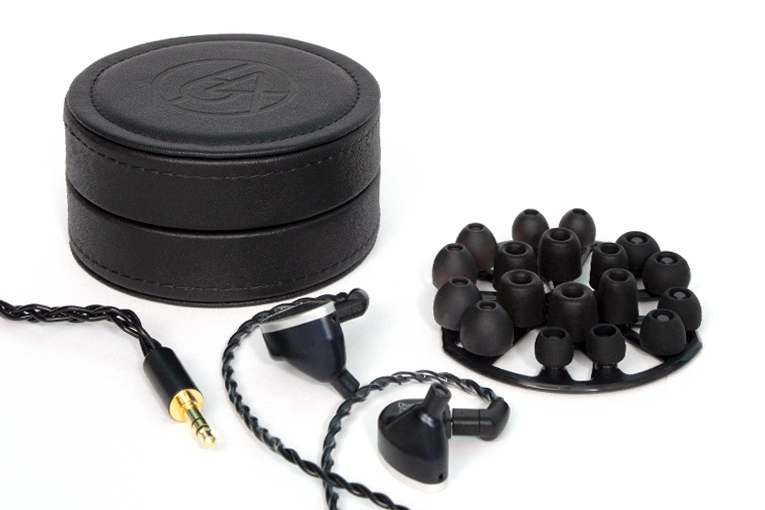
The braided cables measure 4′ (1.3m) and are tipped with a 3.5mm stereo plug on the source end and dual-pin connectors on the ends that attach to the earphones. Many alternative cables are available on 64 Audio’s website and from third-party suppliers.
Use
Even though 64 Audio supplies a generous selection of eartips, none were quite big enough for me, so I had to use aftermarket XL-size tips from SpinFit and Periodic Audio. Fitted with suitable tips, the Duos were comfortable and fit securely in my ears. The rather chunky braided cables untangle easily.
The only thing I really don’t like about the Duos is that the case is too bulky to slip into a pants pocket, but of course, you can easily pick up a smaller, slimmer case for a few bucks on Amazon.
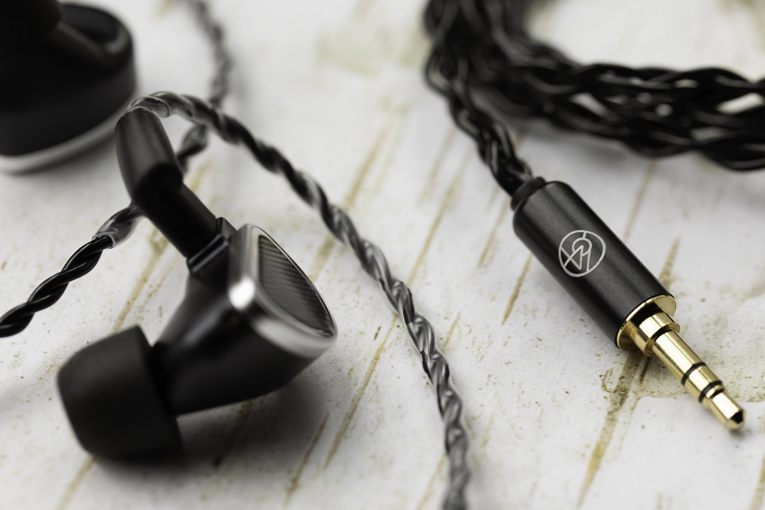
Contrary to my previous concerns, the Duos played plenty loud enough when plugged straight into my Samsung Galaxy S10 phone. But just to make sure the earphones had all the power they might need, I used an AudioQuest DragonFly Cobalt DAC-headphone amp for most of my testing.
Sound
I think maybe the better a set of headphones or earphones are, the easier it is to get a handle on their sound. I certainly had no problem sussing out the Duos’ signature; it was apparent from the first tunes I played through them, and my opinion stayed pretty consistent.
Honestly, I can’t remember the first tune I played through them, but let’s go with “Some Other Spring” (Newvelle Blue, 24-bit/44.1kHz FLAC, Newvelle Records / Qobuz) by the wonderful jazz pianist Frank Kimbrough—who, sadly, I’d just started to get into before he passed away late last year. I’ll never get to hear him play live, but I felt the Duos got me at least a little bit of the way there, helped out by Newvelle Records’ great recording technique—nothing fancy or “audiophile,” just really clean multimiked and mixed recordings that nicely portray the way a jazz group really sounds.
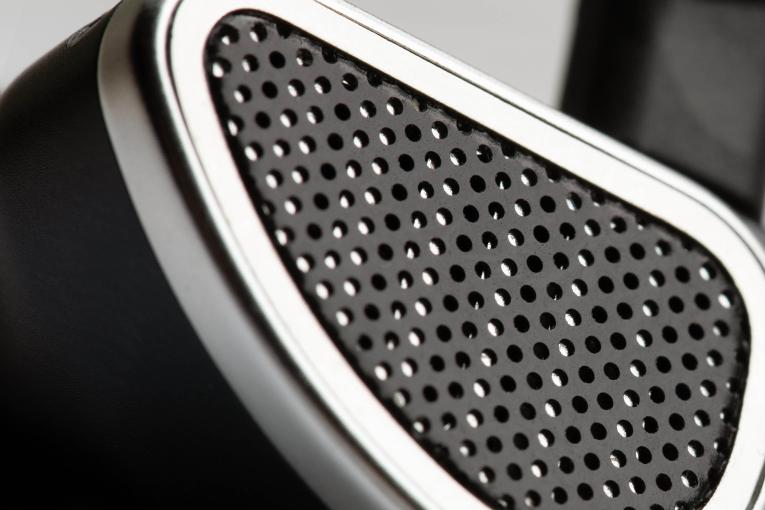
The Duos seemed a perfect fit for this recording because they, too, gave me a nice portrayal of Kimbrough’s quartet. There was an intimate, just-right sense of space that made me feel like I was standing about 8′ away from Kimbrough’s piano, facing the right side (from the player’s perspective). The cymbals sounded detailed but mellow, the way the cymbals a jazz drummer uses are generally supposed to sound, and the earphones’ bass response was flat, clean, and natural. I got the impression that the upper treble, and maybe a bit of the mid-treble, was dialed down by a dB or two, and that there was a mild emphasis a little further down in the mid-treble, maybe around 6kHz—the kind of subtle trick that talented, experienced earphone designers would employ to get the balance just right.
Normally, I like to switch genres a lot in the course of a review, but I’m gonna indulge in one more piano-trio album just because I loved it so much. It’s Chick Corea Akoustic Band Live (24/96 FLAC, Concord Jazz / Qobuz), and let’s focus on the standard “On Green Dolphin Street.” For my taste, bassist John Patitucci and drummer Dave Weckl can get a little flamboyant at times, but somehow, when they play with Chick Corea, their styles seem perfect, and the Duos presented them very cleanly and precisely without resorting to the annoying trick of amping-up the treble. Again, the cymbals—in some ways, the hardest instrument to reproduce naturally—sounded just right. I heard no resonance or boom or exaggeration of particular notes in Patitucci’s double bass lines, and Corea’s piano sounded much like Kimbrough’s, but with a bigger sense of space because it’s a live recording. I did note that little bit of emphasis in the mid-treble, but regardless, I just wanted to listen to the music, and the transducers didn’t seem important, which is exactly the way high-quality audio gear is supposed to work, at least in my opinion. I’d rather focus on the fantastic rhythmic interplay between Corea, Patitucci, and Weckl than listen for the sonic anomalies of transducers.
OK, I’d better do my job and diversify my listening here, so let’s go to female pop vocals—which for me, often means going to Ariana Grande because I like her voice and don’t hate her music. On the title track of Positions (24/44.1kHz, Republic Records / Qobuz), I heard pretty much what I expected—a nice (but not huge) sense of space, that slight emphasis in the mid-treble that made her voice sound just a little brighter, and a generally clean presentation. While the bass was definitely clear and precise, my brief experiences witnessing pop and hip-hop recording sessions led me to speculate that what the kazillion people credited on this recording heard in the studio probably had about 4dB more bass than what I heard—but the audio enthusiasts who might buy these earphones wouldn’t be even slightly bothered by that likely inaccuracy.
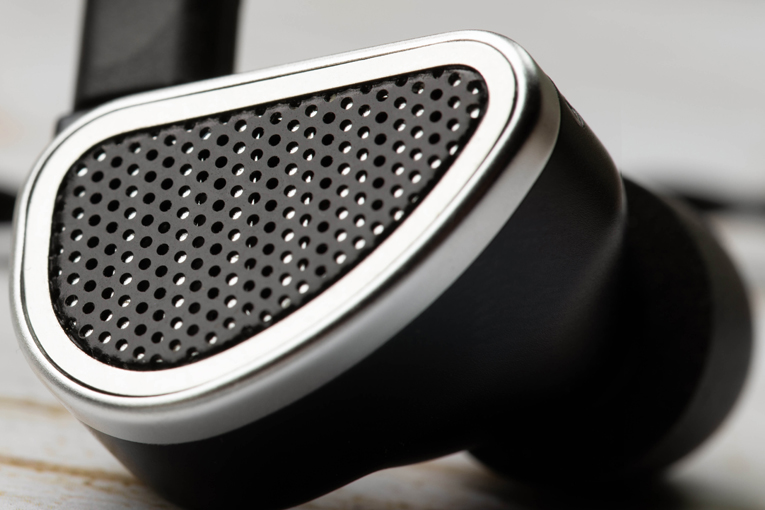
I wanted to get a better handle on the bass response, and it turns out the song I put on for fun while I was contemplating which tune could best test the bass response turned out to be perfect for that task. It’s “Sleepless” from King Crimson’s Three of a Perfect Pair (256kbps MP3, E.G. / Warner Bros). I’ve heard this tune a zillion times on systems from the Radio Shack Realistic Minimus 3.5s bolted to the back deck of my old Fiat 124 sedan to my Revel Performa3 F206 loudspeakers with Krell amps, and I can say with confidence that the Duos’ clarity on the tune’s intricate, interlocking guitar parts was outstanding—but I think a few dB more bass would have probably been more in keeping with the genre. Not that progressive rock is bass-heavy music, but Tony Levin’s awesome slapped electric bassline on this tune warrants a little more of the spotlight than the Duos gave it.
Comparison
I compared the Duos with two competitors that seemed to be in their class: the U6t and the Audeze Euclid earphones (both $1299).
Comparing these three earphones is like comparing jazz guitarists Herb Ellis, Joe Pass, and Barney Kessel—they’re all in the same genre, all basically aiming for the same goal, but getting there in slightly different ways. On Joni Mitchell’s “Carey” (Blue, 24/192 FLAC, Warner/Qobuz), the U6t’s seemed to have slightly clearer treble than the Duos, but their bass sounded less flat and more resonant, with an apparent bump in the midbass. The Euclids sounded a little flatter than the Duos in the treble, but their bass was dialed down a dB or two relative to the Duos.
I thought these three earphones deserved to be compared on the flattest possible playing field, so to speak, so I put on “Buddy’s Bounce” from Take2, my new CD with saxophonist Ron Cyger (16/44.1 FLAC, Outrageous 8 Records / Qobuz). I mixed the album and worked with the mastering engineer on it, so it’s one of the rare examples where I can say I know what a music recording should sound like. Going from bottom to top, I liked the Duos’ and Euclids’ bass responses better than the U6t earphones’ bass because those two sounded flatter and didn’t have that resonant hump. But the treble of the U6t’s was a little more vivid than the others, which I dug. All three sounded very good, but I think I dug the Duos and the Euclids a little more because I liked their bass better. And between those two? Gosh, that’s a tough pick. I honestly don’t know. They’re really, really close. (And now watch me embarrass myself when I find out that the two measure very differently—although as I write this, I haven’t measured the Duos yet, so I’m not sure.)
Conclusion
The Duos are definitely as good a set of earphones as I’ve ever heard. They don’t have the tuning flexibility of the U6t’s—in fact, they don’t have any tuning flexibility—but unless you really love messing around with your audio gear and changing its sound to suit your mood, I doubt you’ll care about that. Other than the case, they’re easy to fit, easy to drive, and easy to live with.
. . . Brent Butterworth
Associated Equipment
- Smartphone: Samsung Galaxy S10
- DAC-headphone amplifier: AudioQuest DragonFly Cobalt
64 Audio Duo Earphones
Price: $1199.
Warranty: One year.
64 Audio
4510 NE 68th Dr., Suite 102
Vancouver, WA 98661
Phone: (833) 642-8346
Website: www.64audio.com




